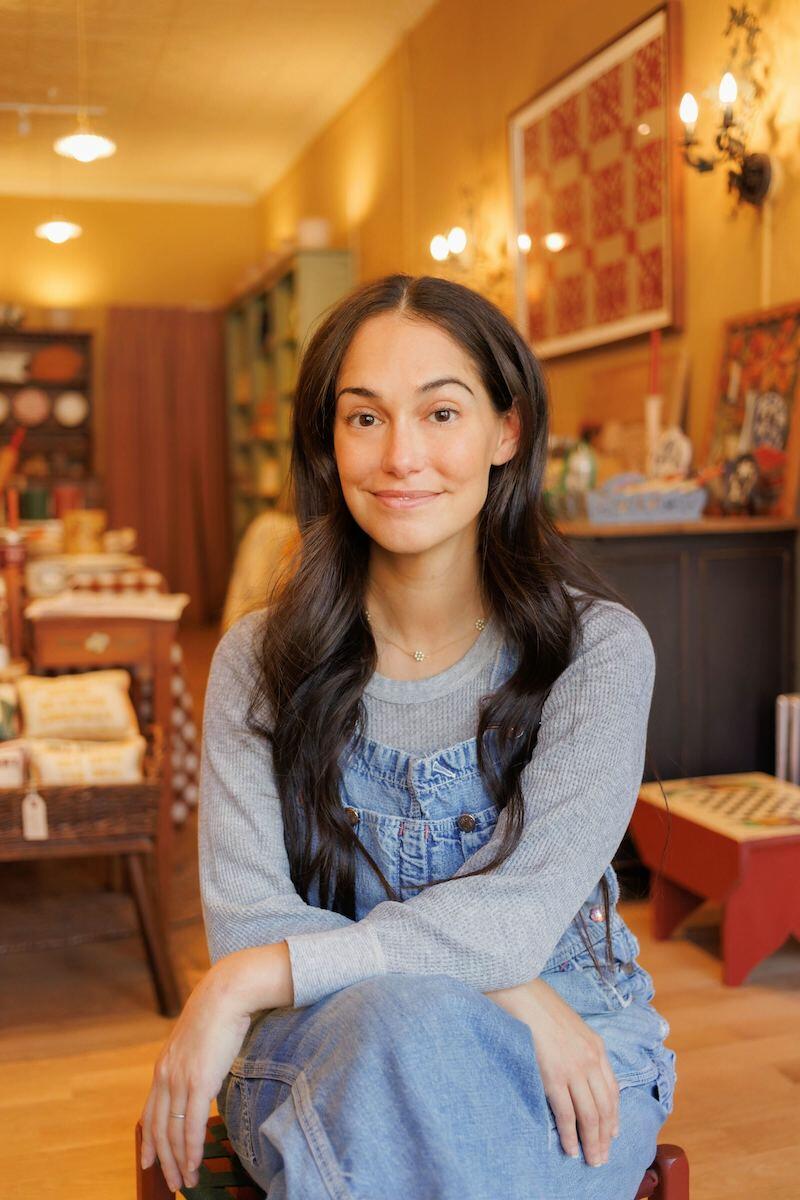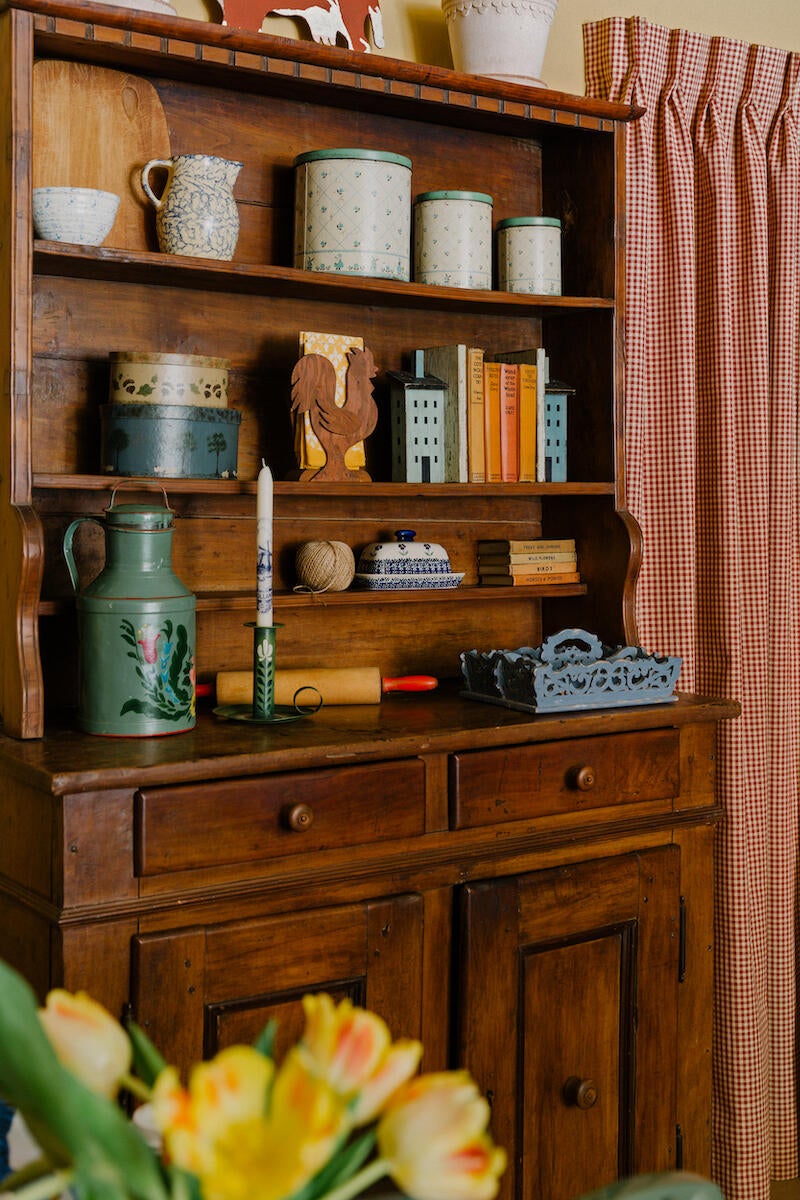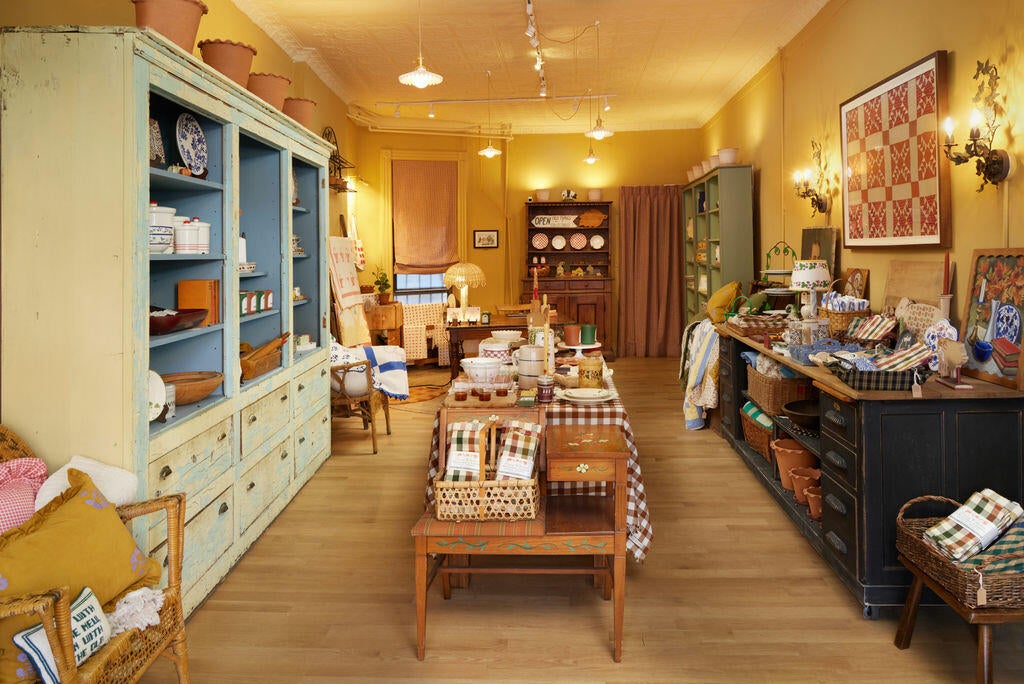In Business of Home’s series Shop Talk, we chat with owners of home furnishings stores across the country to hear about their hard-won lessons and challenges, big and small. This week, we spoke with retailer Audrey Gelman of Brooklyn’s The Six Bells.

After spending the 2010s appearing on HBO’s series Girls and on magazine covers promoting her erstwhile women’s co-working space The Wing, Gelman has a much more low-key life these days as the proprietor of the humble home goods store she opened in 2022. Located in the charming Brooklyn neighborhood of Cobble Hill, The Six Bells has a cottagecore aesthetic in the extreme—its website even proffers a fictional village of Barrow’s Green from which the shop has sprung, along with a cast of characters with names like “Lady Pamela Ashborne.” While the New York media has gently mocked the venture, Gelman shrugs the reaction off as “very short-lived,” adding, “I think sometimes there’s skepticism at the beginning.” As she explains, the ongoing success of the store, both online and in person, proves that she remains ever the savvy businesswoman.
Why were you interested in going into retail?
I wanted to build something around an aesthetic and a state of mind. I think retail is in some ways the obvious choice because the heart of the aesthetic are things and objects, old things that are loved. It wasn’t necessarily that I was dying to jump into the retail business; it just seemed to dovetail and make sense with the vision.
Can you tell me the genesis of the Barrow’s Green concept?
[After] deciding that retail was the best format, I wanted to create something unique, that you don’t see with retail. The idea was to build this fictional world in which the characters and The Six Bells existed, but also in real life in Brooklyn. Because the style is so connected to a combination of traditional Americana [and] British nationalism, the idea for a pretend British village came about. There’s something different and, in a sense, weird, about creating lore around a concept where you can buy things and take things home with you, but it’s not just as simple as that.
Did you work with anyone to craft the narrative? There are illustrations, too. Tell me about bringing it to life.
So editorially, it all came from my brain. All of that stuff was written by me. For the brand identity, I worked with a creative director who I’ve worked with for a very long time named Deva Pardue, and then we worked with an amazing Irish illustrator who did basically a watercolor painting of the fictional village.
What is the store’s neighborhood like?
Cobble Hill is different from what most neighborhoods in New York have become because there’s no big-box retail. It’s almost all small, family-owned businesses that have their own true stories. When thinking about the right place for The Six Bells, there’s [already] a little bit of [a sense that] you’re frozen in time in Cobble Hill. There are stores where the interiors feel like they’re turn of the century.

Who is your typical customer? Is it foot traffic?
We have a lot of foot traffic, and people who follow us and have heard about us make a stop when they’re coming to New York. Really, the biggest part of the business is e-commerce. We’ve been surprised—there’s obviously a concentration of coastal customers in New York and California, but a huge portion of the sales are coming from Texas, North Carolina, Alabama and small towns around the country. It’s a store in Brooklyn but a large portion of our online sales are coming from Southern and Midwestern states.
What is your approach to sourcing?
Seventy percent of the product mix is multibrand retail, so individual small brands. Some are sourced from the U.S., but a large percentage are from Europe—England, France, Austria. We have a brand we love that’s in Tripoli, Lebanon. Some of them I had followed and was a fan of myself, as a customer; some were through a discovery process of casting this incredibly wide net and finding really special brands. A lot of the brands haven’t ever been sold in the U.S. before. We’ve also worked with some bigger brands: Heather Taylor Home and Sharland England, which is [British journalist and designer] Louise Roe’s homewares brand based in London. We have found some people on platforms like Etsy. Most of it is concentrated from a nonscientific process, just looking and looking.
Is there a certain object or category that flies off the shelves?
Definitely antiques. We do an antiques drop every few weeks and they normally sell out very quickly. The two [biggest] categories are bedding and dining. Quilts are huge, so we’re constantly having to restock our quilt inventory and bedding, pillows.
Where did your love of antiques come from?
My grandfather’s dream was to open an antiques store. He was a picker, as they call it, and he would take me to estate sales, flea markets and antiques malls. I cannot tell you how many wire chicken baskets and primitive cows were on the shelves of my grandparents’ house. He really passed it on to me. I grew up like a junior picker, and now I get to do it for work. I’m always in rapture. I go all over the country—Kentucky, Indiana, Missouri, Alabama, Pennsylvania, Vermont and Maine. Sometimes I just get in a Sprinter van and drive myself. Often I’m visiting towns hours outside of urban centers. It’s a meditative experience, and I get to take a break from life and do it solo. I’ve visited basically all of the largest antiques malls in America and scoured these incredible places, met interesting people. It’s been a fun scavenger hunt that I get to go on all around the country.
What are your own favorite items in the store? Do you have a preferred category?
There’s a sentimentality I have around the antiques because I’ve personally picked every single one, so as they sell, I feel happy they’ve found a home. I use a lot of the brands we sell in my home, and the great thing about them is that they’re not so precious that they just sit as an object. You get utility and use out of them. BasShu quilts, which are actually Japanese but in the style of classic Americana 18th- and 19th-century quilts—I have one on my bed. We work with a woman named Minnie-Mae Stott, an incredible ceramicist. Whether it’s platters or serving bowls, I’ll use those in my kitchen when I’m having people over.
Has your e-commerce strategy shifted at all since you launched?
The first year was very experimental. We didn’t know what the ratio of in-store and online sales would look like. So the biggest shift we’ve had to make is just volume and buying, because the demand outpaced our projections and expectations. We work with an incredible warehouse—one of the only women-owned partners who do shipping and packaging—so it’s actually been more seamless than I expected. But our biggest shift in strategy was just that we had to go a lot deeper in volume.

That’s a great problem!
Yeah, you start something and it’s small at the beginning, and you just don’t really know what to expect.
How often are you in the store and on the floor, and do you get a reaction from the customers who recognize you?
I’m there a bunch of times a week. We have an amazing and very capable team, and I have an incredible right hand named Marie Joh who has an extensive background in e-commerce—she was at Target and Tory Burch—so I’m not necessarily required to be there all the time. Most of my work is on the e-commerce strategy. We definitely have customers who are excited to meet in person and hear about how the business is going. It’s always fun for me. For the first few weeks, I got to sit at the counter and meet people, and that was important to me.
What are your dreams for the business’s future? Do you imagine expansion—maybe opening something upstate?
The business I admire is Magnolia [Market] because I think what they’ve done is innovative in the sense that it’s so diversified. They have retail, obviously, but there’s so much to it. Hospitality expanding into new forms that aren’t strictly retail—that’s the bigger vision for what’s next in the business.
What’s your favorite day in this business?
It’s interesting because we have people who are visiting New York and know about the business but are coming from all over the world. We’ll have a day where a couple will come from Ireland who know that we carry Nicholas Mosse, which is an incredible Irish brand of ceramics. They’ve followed us, whether on social media or by reading articles about the business, and they’ve made a little bit of a pilgrimage. That’s my favorite thing—when someone has made a point to visit us and gone off the beaten path from the normal tourism agenda to come to Brooklyn.
Homepage image: The Six Bells store opened in 2022 in the charming Brooklyn neighborhood of Cobble Hill | Roarke Design Studio




























